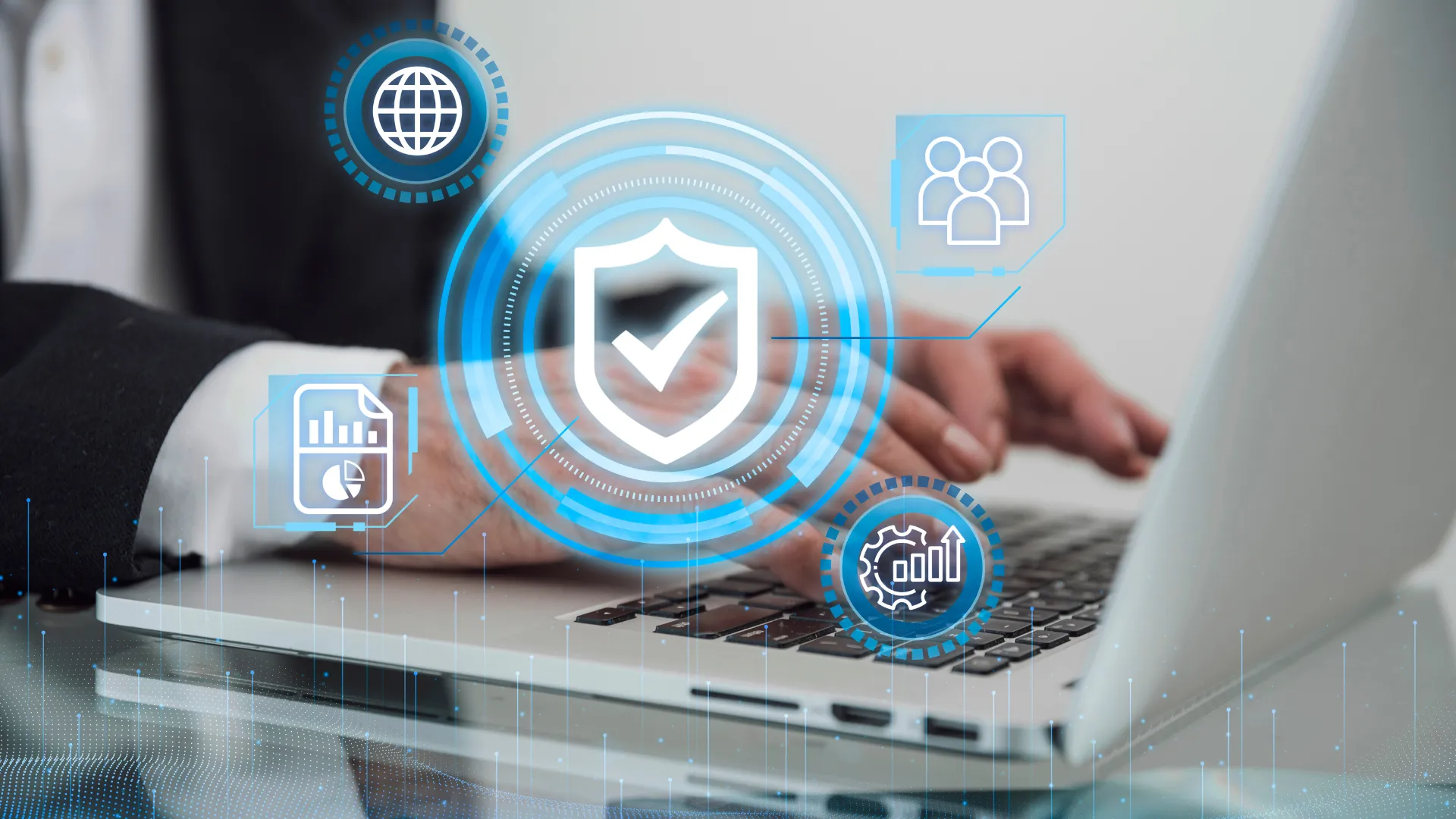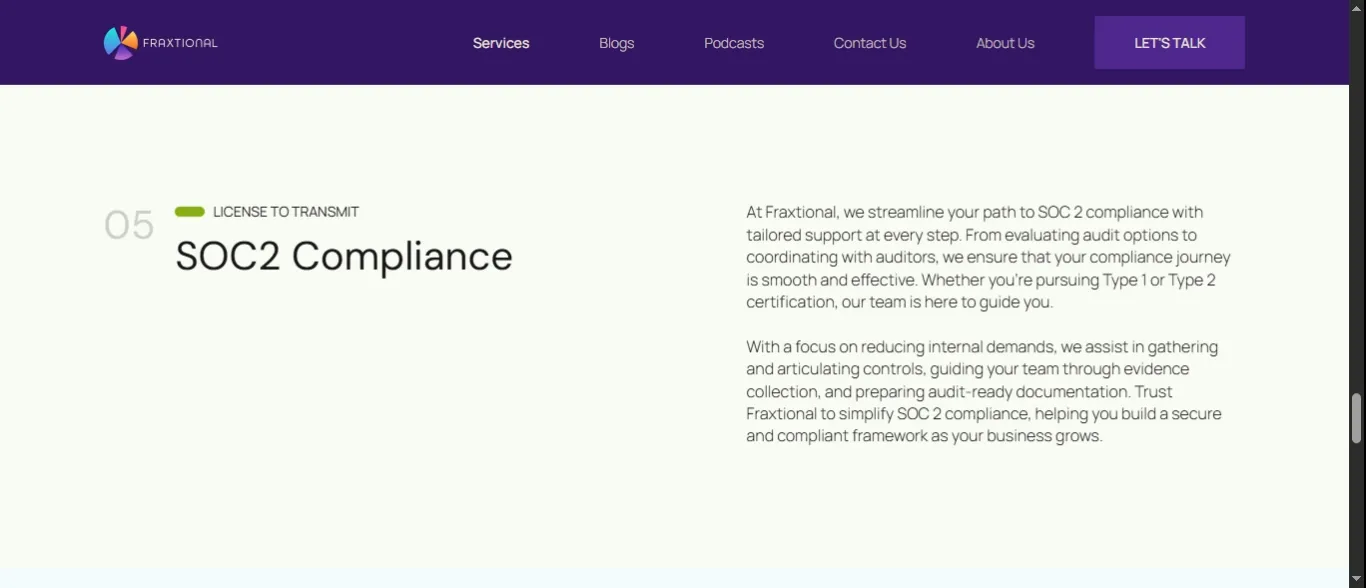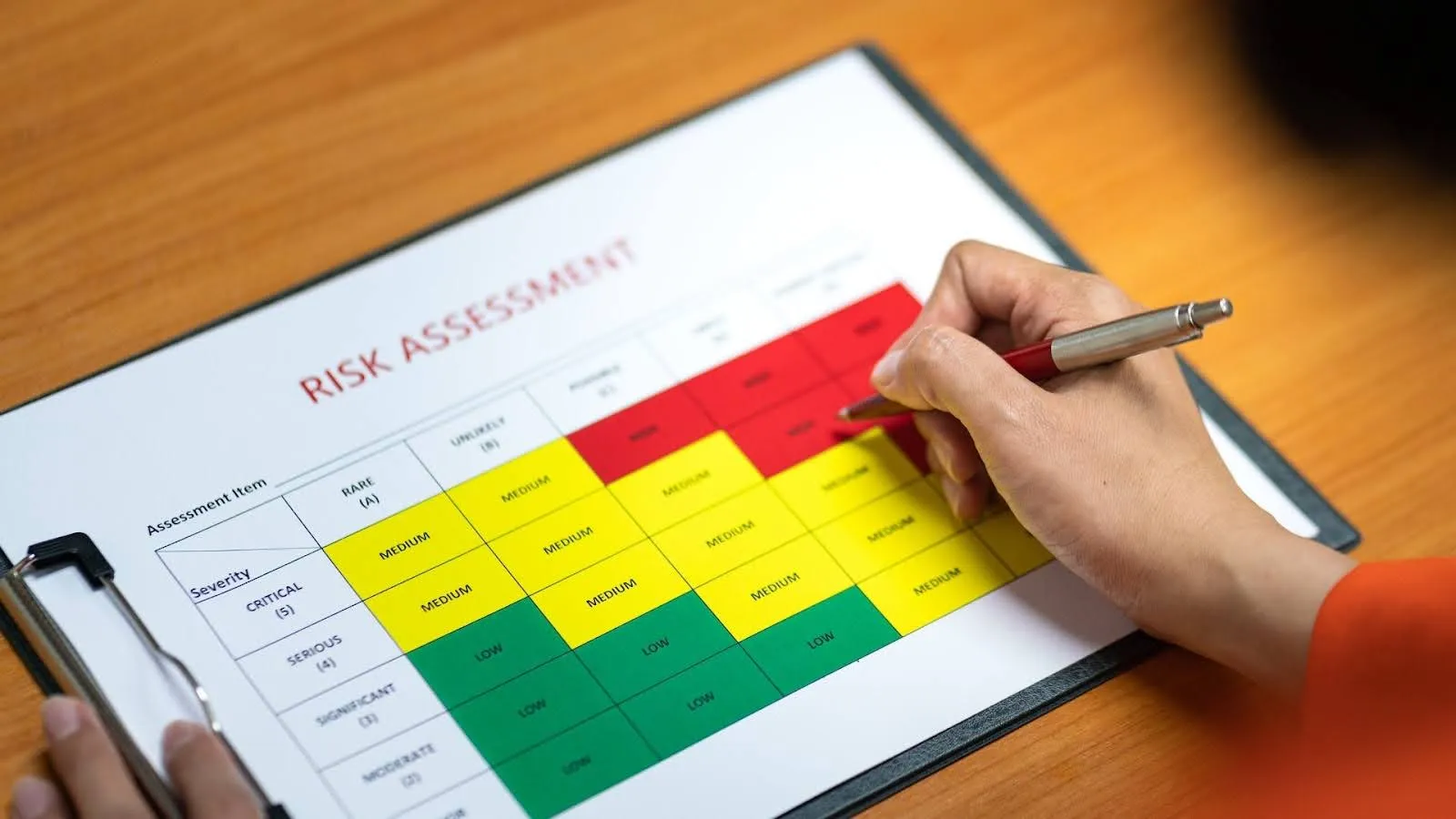Jul 28, 2025
What is SOC 2 Type 1 Compliance & How to Achieve It?

By Fraxtional LLC

TL;DR
- Definition: SOC 2 Type 1 is a security compliance audit that evaluates how well your internal controls perform.
- Time-Based Audit: Reviews how consistently your systems uphold the Trust Services Criteria over time.
- Trust Criteria Scope: Covers Security, Availability, Processing Integrity, Confidentiality, and Privacy.
- Startup Advantage: Builds trust with clients, investors, and partners, especially in fintech and crypto.
- Investor Confidence: Signals long-term stability, risk awareness, and operational discipline.
Data breaches and security incidents are no longer just unfortunate events. They can seriously damage a startup’s reputation, erode customer trust, and halt growth. According to IBM’s Cost of a Data Breach Report, the average cost of a data breach in 2024 was $4.88 million, a risk that few early-stage companies can afford.
We understand how overwhelming it can be for early-stage fintech and crypto startups to navigate complex security requirements while trying to grow rapidly and secure investor confidence.
For FinTech and crypto startups, the pressure to prove that you can protect sensitive customer data is higher than ever. So, how do you show investors, clients, and partners that your security controls are reliable?
That’s where SOC 2 Type 1 compliance comes in. It validates that your internal controls are properly designed and implemented to protect customer data. Whether you’re Seed or Series B, this milestone is often the first major signal that your company is serious about security and ready to scale responsibly.
This guide will break down what SOC 2 Type 1 compliance is, why it matters for your business, and the steps you need to take to achieve it.
What is SOC 2 Type 1 Compliance?

SOC 2 Type 1 compliance is a certification that demonstrates your company has the necessary systems and processes to maintain data security. It’s based on a set of standards called the Trust Services Criteria, which cover five key areas: security, availability, processing integrity, confidentiality, and privacy. The audit looks at how your controls are designed and confirms they’re in place at a specific point in time.
For early-stage fintech and crypto startups, especially those handling sensitive customer data or digital assets, this certification is a strong signal to investors, clients, and partners that you take data protection seriously. If your internal team is still growing, Fraxtional’s fractional compliance leadership can help you understand these criteria, implement controls correctly, and ensure your readiness, from day one.
For startups in the seed to Series B stage, SOC 2 Type 1 is often the first step toward building a strong compliance posture. It doesn’t prove ongoing performance, but it lays the groundwork for future audits, like SOC 2 Type 2, and helps show you're ready to meet industry standards from day one.
That early validation is especially important in high-risk, fast-moving sectors like fintech and crypto, where trust and compliance can directly impact growth.
Also Read: Audit Trail in Financial Institutions: Types, Importance & Best Practices
Why SOC 2 Type 1 Compliance Matters for Early-Stage Startups?

For early-stage fintech and crypto startups, SOC 2 Type 1 is more than a checkbox; it’s a growth enabler. It offers a clear way to show that your company takes data security seriously and is aligned with industry best practices. SOC 2 Type 1 compliance helps in:
- Building Trust with Customers and Partners: SOC 2 Type 1 compliance shows customers and partners that you take data protection seriously. It is especially critical in fintech and crypto, where trust and security are top priorities.
- Meeting Investor Expectations: SOC 2 Type 1 signals that your team is forward-thinking, understands risk, and is committed to long-term, secure growth.
- Preparing for Growth and Scaling: As scrutiny increases with growth, SOC 2 Type 1 lays the groundwork for future audits like SOC 2 Type 2. It also supports expansion into new markets and enterprise partnerships.
- Navigating Regulatory Requirements: SOC 2 Type 1 aligns your operations with the Trust Services Criteria and helps you stay ahead of evolving regulations. It eases the path to other certifications like AML/KYC and Money Transmitter Licenses.
- Gaining a Competitive Edge: Getting certified early demonstrates proactive compliance. Earning third-party validation helps set you apart in a crowded market and builds confidence with customers and stakeholders.
- Reducing Risk and Protecting Your Reputation: SOC 2 Type 1 helps detect weaknesses before they become breaches. This reduces risk and safeguards your brand from costly security failures.
If you're managing sensitive data, Fraxtional can guide you through vendor expectations and investor requirements, ensuring your compliance posture supports your scaling business.
For early-stage fintech and crypto startups, meeting SOC 2 Type 1 requirements isn’t just about checking a box; it’s about unfolding opportunities.
Key Benefits of SOC 2 Type 1 for Fintech & Crypto Startups

SOC 2 Type 1 compliance brings measurable advantages, especially in high-trust industries, where trust and security can make or break your growth. If you’re building from Seed to Series B, this certification gives you a competitive edge and sets a strong foundation for scaling responsibly.
Here’s how it can support your journey:
- Builds Trust with Customers and Partners: SOC 2 Type 1 acts as a stamp of approval that shows your fintech or crypto business takes data protection seriously. It helps you earn lasting trust from customers and partners.
- Strengthens Credibility and Reputation: This widely recognized certification shows that you follow security best practices. It makes it easier to stand out, win trust, and open new opportunities.
- Attracts Investors and Eases Fundraising: SOC 2 Type 1 certification reassures investors that you've prioritized secure, scalable operations from the outset. It reduces risk and increases appeal during Seed to Series B funding rounds.
- Lays the Foundation for Future Compliance: It sets you up for long-term success by establishing strong internal controls. This makes it easier to pursue advanced certifications, such as SOC 2 Type 2, as your company grows.
- Reduces Risk and Improves Efficiency: The compliance process helps identify and fix control gaps early. This lowers risk and streamlines operations for more efficient, secure growth.
- Supports Business Continuity and Crisis Response: SOC 2 Type 1 ensures you have systems in place to maintain data availability and security during disruptions. This improves your crisis response and business resilience.
- Helps You Stay Ahead of Regulations: It shows alignment with key regulatory expectations, helping you adapt more easily to evolving compliance standards in fintech and crypto.
- Gives You a Competitive Edge: Proactively earning SOC 2 Type 1 shows you're serious about security from the start. It gives your startup a distinct edge in a competitive market.
- Simplifies Customer Due Diligence: Having SOC 2 Type 1 in place speeds up onboarding with enterprise clients by providing ready-made audit proof of your security controls and practices.
While the benefits of SOC 2 Type 1 are clear for early-stage startups, it’s also important to understand how it compares to the next level of certification.
Also Read: Fintech Compliance: Essential Practices and Challenges
SOC 2 Type 1 vs. Type 2: What’s the Difference?
Knowing the difference between SOC 2 Type 1 and Type 2 is key to choosing the right path in your compliance journey. Both show that you care about protecting sensitive data, but they focus on different things and require different levels of effort. Understanding how they compare can help you decide which one makes the most sense for your business, especially as you move from early growth to scaling.
Here's a quick breakdown to guide you.
As you plan to shift from Type 1 to Type 2, Fraxtional can help you scale your compliance program, aligning your roadmap with investor, customer, and regulatory expectations.
Once you're clear on the difference between Type 1 and Type 2, the next step is knowing how to get started.
Also Read: Understanding Risk and Compliance Management Strategies
8 Steps to Achieve SOC 2 Type 1 Certification
Achieving SOC 2 Type 1 compliance is a significant milestone for early-stage fintech and cryptocurrency startups. It helps you build credibility with customers, investors, and partners by showing that you have strong internal controls to protect sensitive data. To help you get started, below is a step-by-step guide to achieve the SOC 2 Type 1 certification:
Step 1: Understand the Trust Services Criteria (TSC)
Before starting the process, you need to understand the five Trust Services Criteria that form the foundation of SOC 2:
- Security: Saving systems and data from unauthorized access or changes.
- Availability: Making sure your systems are up and running as expected.
- Processing Integrity: Ensuring data is processed accurately and on time.
- Confidentiality: Protecting sensitive business information.
- Privacy: Managing personal information in line with privacy laws and regulations.
Most fintech and crypto startups focus primarily on Security and Confidentiality, but this depends on the type of data you handle and how your services operate.
Step 2: Set Up Your Security and Privacy Policies
Next, you’ll need to establish clear internal policies that align with the Trust Services Criteria. These policies should cover areas like:
- Data encryption and access controls
- Incident response plans
- User authentication processes
- Employee training around security and privacy.
Step 3: Perform a Pre-Audit Gap Analysis
A gap analysis identifies where your current practices fall short of SOC 2 requirements before the actual audit begins. This can be done in-house or with the assistance of a SOC 2 consultant. During this step, review:
- Existing security tools and configurations
- Data handling practices
- Employee awareness and training
- Monitoring systems and alert mechanisms.
Step 4: Put Security Controls in Place
Once you’ve identified what’s missing, it’s time to act. Implement or improve the necessary controls. This might include:
- Access management: Limiting access based on roles
- Audit logs: Tracking system activity to catch suspicious behavior
- Data encryption: Protecting data while it's moving and stored
- Backup and recovery: Preparing for outages or breaches
You may need to collaborate with your IT team or external experts to ensure everything meets SOC 2 standards.
Step 5: Gather Documentation and Evidence
SOC 2 Type 1 focuses on how your controls are designed and implemented at a single point in time. That means you’ll need to document proof that your systems are set up correctly and are functioning properly. This might include:
- Written control policies and procedures
- Access logs and audit trails
- System configuration screenshots
- Records of employee security training
Step 6: Work with an Independent Auditor
To get certified, you’ll need an independent auditor to review your setup. Select a firm with solid SOC 2 experience, ideally one that has a deep understanding of fintech or crypto environments. During the audit, they’ll:
- Review your documentation
- Talk to your team about how security is managed
- Test a sample of your controls to ensure they’ve been implemented.
Step 7: Receive Your SOC 2 Type 1 Report
Once the audit is complete, you’ll receive a SOC 2 Type 1 report. It outlines:
- Whether your controls are properly designed and aligned with the TSC
- Any issues or exceptions the auditor found
- Recommendations for improvement (if needed)
If everything checks out, you’ll be officially SOC 2 Type 1 compliant.
Step 8: Stay Compliant and Plan for SOC 2 Type 2
Even after getting Type 1 certified, you’ll need to continue monitoring and improving your security posture. As your business matures, it’s smart to start preparing for SOC 2 Type 2, which goes a step further by evaluating how well your controls perform over a longer period. This is a natural next step for startups scaling their operations and taking on larger customers.
Preparation becomes much more effective when you know what to expect from the process and who will lead it.
Also Read: Effective Audit Risk Assessment for Financial Firms
Who Performs a SOC 2 Type 1 Audit?

A SOC 2 Type 1 audit must be conducted by an independent third-party auditor, typically a Certified Public Accountant (CPA) or a firm specializing in IT audits and security assessments. These professionals are trained to evaluate whether your company’s controls are properly designed and implemented at a specific point in time, based on the Trust Services Criteria (TSC).
You need certain key qualifications for Certified Public Accountants (CPAs) and specialized audit firms:
The right auditor understands both your tech stack and your industry risks. That’s what makes the difference between a smooth audit experience and one that drags on unnecessarily.
If your internal capacity is limited, Fraxtional can step in to manage documentation workflows and compliance tool integrations, ensuring nothing falls through the cracks before audit day.
But understanding the cost of SOC 2 Type 1 certification is also important when you're planning your compliance journey.
Also Read: How to Create an Effective Compliance Program: Key Steps & Best Practices
How Much Does It Cost for SOC 2 Type 1 Certification?

Budgeting for SOC 2 Type 1 certification is an important part of building a strong compliance foundation. While costs can vary depending on your company’s size, systems, and complexity, here’s a breakdown of the main cost components so you can plan ahead:
- Auditor Fees: This is usually the largest expense that ranges from $10,000 to over $30,000, depending on your company size, infrastructure complexity, and whether you choose a firm with fintech or crypto expertise.
- Pre-Audit Gap Analysis: Optional but helpful, a gap analysis costs $5,000 to $15,000 and helps identify control weaknesses early, potentially saving time and money during the actual audit.
- Internal Preparation Costs: Preparing for the audit requires time from IT, DevOps, and Compliance teams. If external consultants are involved, expect to pay $100–$300 per hour.
- Compliance Tools and Software: Platforms like Vanta, Drata, or Tugboat Logic can cost $5,000 to $20,000 annually and help automate evidence collection, policy management, and monitoring.
- Ongoing Compliance and Maintenance: Maintaining SOC 2 Type 1 costs around $10,000 to $15,000 per year, and future SOC 2 Type 2 audits typically cost more due to their longer assessment period.
Fraxtional allows you to access compliance leadership without hiring full-time, freeing up your tech team while staying audit-ready.
Also Read: How to Create an Effective Compliance Program: Key Steps & Best Practices
Get SOC 2 Type 1 Compliance Right From Day One
Achieving SOC 2 Type 1 compliance can be overwhelming, especially for fast-growing fintech, crypto, and digital asset startups juggling product, fundraising, and security. That’s where Fraxtional steps in.
Fraxtional connects you with compliance experts who know what it takes to pass a SOC 2 Type 1 audit, without the cost or commitment of a full-time hire.
With Fraxtional by your side, you get:
- Expert-led SOC 2 readiness assessments tailored to fintech and crypto
- Hands-on support designing and documenting your internal controls
- Help selecting the right audit firm and navigating the full audit process
- Guidance on evidence gathering, policy creation, and gap closure
- Scalable compliance leadership that grows with your business
Whether you're aiming to land your first enterprise client, close a funding round, or build long-term trust, Fraxtional helps you approach SOC 2 Type 1 compliance with confidence and get it right the first time.
Conclusion
Achieving SOC 2 Type 1 compliance is a major milestone for any early-stage FinTech or crypto startup. It helps build confidence with your customers, investors, and partners by showing that your internal controls are thoughtfully designed to protect sensitive data and align with industry standards.
The process may seem complex at first, but with the right support and tools, it becomes much more manageable. At Fraxtional, we work closely with startups to simplify the SOC 2 journey. Our team brings deep expertise in FinTech and crypto compliance, helping you design strong controls, prepare for audits, and stay on track as your business grows.

Partner with Fraxtional to get the guidance you need to achieve and maintain SOC 2 Type 1 compliance.
Next Read: Key Steps in Compliance Risk Assessment
FAQs
The Trust Services Criteria are the core areas SOC 2 evaluates: Security, Availability, Processing Integrity, Confidentiality, and Privacy. For SOC 2 Type 1, most startups focus on Security first, as it’s the foundation for protecting systems and data.
On average, achieving SOC 2 Type 1 compliance takes 2 to 4 months. The timeline depends on the maturity of your internal processes. Key steps include conducting a readiness assessment, addressing any identified gaps, and completing the audit.
If you’re working with sensitive customer data or aiming to land larger clients or partners, the answer is yes. SOC 2 Type 1 helps establish trust early and shows your commitment to security and compliance.
No, it’s not legally required. However, many enterprise clients, partners, or vendors may request it as part of their onboarding process. It’s a widely accepted way to prove your company meets high standards for data protection.
To prepare for SOC 2 Type 1 compliance, start with a readiness check and a gap analysis of your current security setup. Then, implement the necessary controls, such as access management, incident response plans, employee training, and documentation. Once you’re confident everything’s in place, you can bring in an auditor to begin the certification process.
blogs
Don’t miss these
Let’s Get Started
Ready to Strengthen Your Compliance Program?
Take the next step towards expert compliance solutions. Connect with us today.




